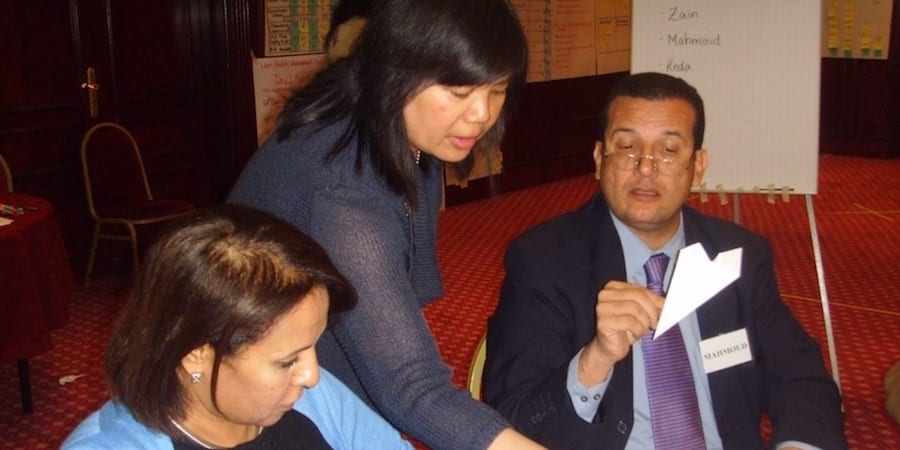
Standard work for leaders
FEATURE – The author reflects on the importance of standardized work in her daily life as a manager and explains why one can’t expect to run a company only using reports.
Words: Sharon Visser, CEO, Lean Institute Botswana
My first attempt at standard work was in 2008, long before my lean days. I had just been promoted to Dealer Principal of a Toyota franchise, after my boss suddenly had to leave for a medical emergency.
There was a short handover that included a colorful spreadsheet that was supposed to tell me everything I needed to know. After some time grappling with the spreadsheet, I went to the Financial Manager and confided in her that it made no sense to me whatsoever and that I was concerned I did not have the required skills for the job.
She said that she would look at it and see if she could explain it to me. Later in the day, she got back to me and told me that the reason it did not make sense to me was because it did not make sense. The formulas were totaling the wrong columns and did not match what the Dealer Management system was communicating. This was why I could not reconcile my understanding to what it was saying.
What a relief, and what a powerful reminder that honesty is the best policy! That day, I learned that just because something looks the part does not mean that it is. If you don’t understand something, ask. The spreadsheet looked very professional – it had complex formulas and was beautifully color coded – but it was useless. I had been told that this document was the Holy Grail of the position, but I found it to be as naked as the emperor in the children’s story The Emperor’s New Clothes.
I then realized that if I wanted to cope in my new position, I’d have to start from scratch to learn about the work that had to be done.
I started with the reporting system, as at that time it was the only place I could see. First, I went to see my Financial Manager again, asking her what reports are key to my position. She gave me the key reports and went through them with me to guide me through what she was seeing. I then went to the Managing Director, the Parts Manager and the Service Centre Manager and asked the same questions. At the end of this process, I had a list of reports that I sifted until I had a clear idea of the vital reports. I did the same with the Toyota system, identifying the requirements and the programs that were running. I then set this into daily, weekly, and monthly tasks.

I entered all this information into a spreadsheet with the help of hyperlinks. There it was the start of my standard work! I worked with it and adjusted wherever I found problems. With help from the Managing Director and the Financial Manager I became very proficient at reading reports and understanding what they said.
Did this work for me? It did. If we manage an organization using history, it was a huge success. This was the year I won the Presidents Award for business excellence from Toyota South Africa. I had become one of the best superhero-firefighters in the Toyota network for Southern Africa. I had a trophy to prove it now. I was so busy fighting fires that I didn’t even have time to collect my award or go on the gifted holiday. I had made myself indispensable. A small voice inside me began to say, “Being indispensable is unsustainable, you are heading for trouble.”
In 2013, when the business changed hands, the new ownership now had in me an exhausted superhero-firefighter as Dealer Principal. I don’t know if they knew what I was, but my understanding of my own condition made me look for alternatives, and Lean Thinking was the one they offered me.
It was during this time that we developed a gemba to walk, somewhat replacing report reading with visuals throughout the business. Responses were controlled by identifying and solving problems and preventing the stagnation of flow. It was during this time that I was eventually allowed to pack away my superhero cloak and take off my firefighting gear.
I have done some general comparisons.

Does this mean that I did not look at reports anymore? No, it meant that when I looked at reports there were fewer problems to solve and more time to plan, coach and develop the people at the front line.
Did I still have standard work? Yes. I used an A4 notebook with a printed listed I pasted in every Monday. This notebook came with me on the gemba, so that I could go through routine checks and make notes of what I saw that needed discussion with the management team.
In both cases, leadership standard work gave positive results. Whenever I didn’t use it, I paid for it with more problems to solve – which often turned into crises forcing me to retrieve my firefighting gear and dusty superhero cloak.

Lean standard work most certainly gave better results, as it helped us to solve problems as they happened before they impacted the customer. Many people going into management feel that the work content is too varied to fit into a standardized work document. My gemba walk was something I managed to fit in every day – often twice a day. Whenever I came back from a trip, the gemba was the easiest way for me to catch up with the current situation, greet my team and let them know I was around.
You might be thinking that you do not have time for standard work. My answer is that if you don’t have standard work, you will never have time.
THE AUTHOR

Read more


INTERVIEW – When we say that lean thinking can be applied to any human endeavor, we mean it. In this Q&A we learn about how knowledge sharing has been boosting the improvement journey of Dubai Police.


PROFILE – While pioneering the application of lean thinking in healthcare, Alice Lee realized that you should always approach teaching as you do problem solving: scientifically, situationally, and with the humility of a learner.


WOMACK'S YOKOTEN – As a new age in aerospace dawns, with a need to move from huge and bespoke designs to affordable and high-volume production, lean thinking has a key role to play. But will the industry listen?


VIDEO INTERVIEW - At the Lean IT Summit, we spoke with Amazon Web Services to understand what type of flexible and scalable IT infrastructure allows organizations to be innovative without breaking the bank.

